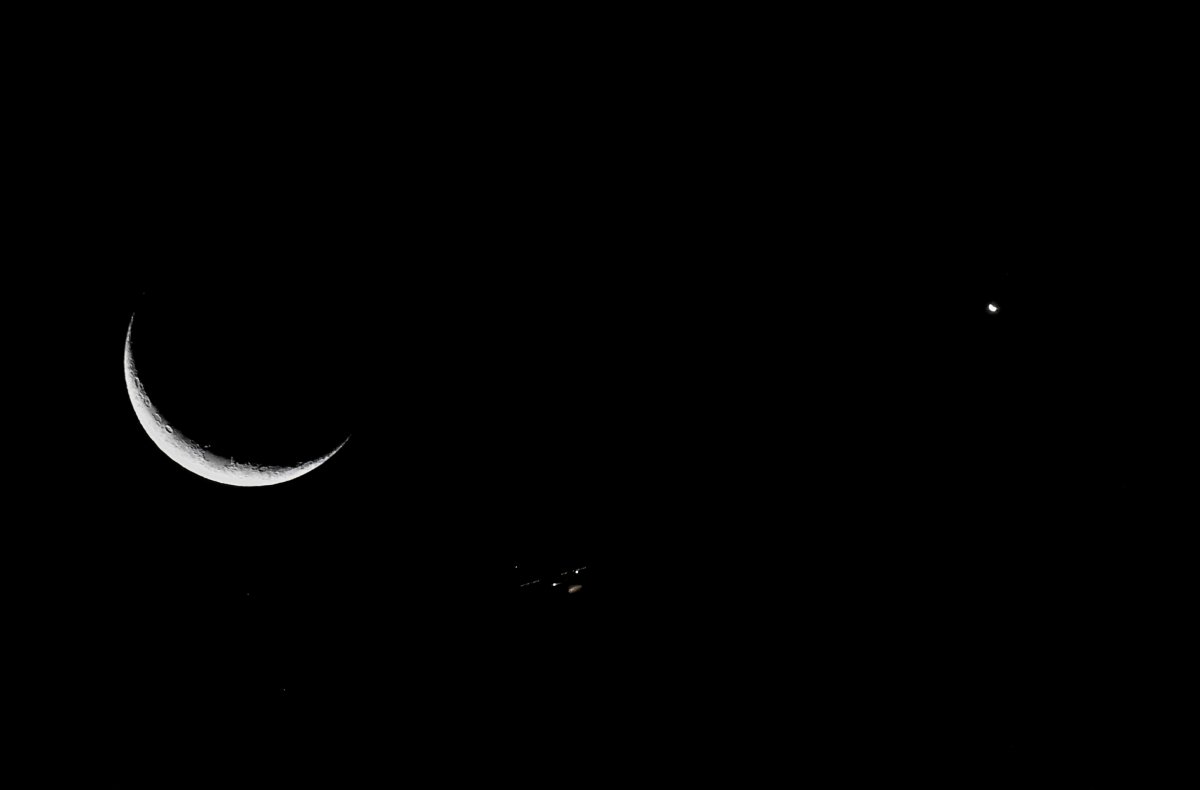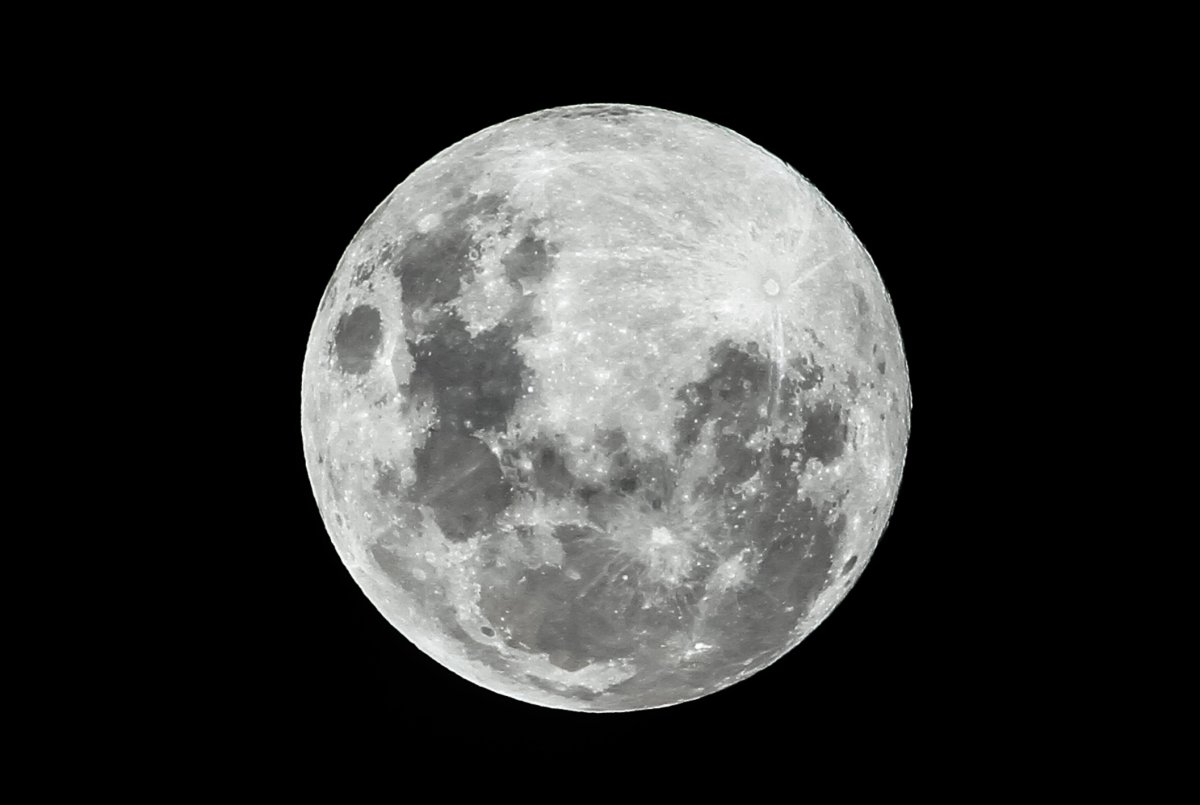The moon and Venus shared a patch of sky this week, and photographers were ready to capture the moment.
Venus, a hellishly hot planet and Earth's closest planetary neighbor, is shining brightly this week as it makes its way towards the sun from our perspective.
Throughout this month of December, Venus will sink closer and closer to the horizon before disappearing for most of the planet by New Years', according to NASA.
It will then reappear in January as a morning planet before shining in the evening once again next December.
But before all that, Venus is set to put on a show and shine brightly this week, presenting a viewing opportunity for skywatchers.
Photographers have taken to social media to post their photos of Venus and the moon close together in the sky. In some photos the two celestial bodies appear side by side; in others Venus appears above the moon. The below were taken by Steve Brown, Linda Holtby, and Martin Bernetti.
The moon and Venus tonight from Winchester, with a little Earthshine showing on the new moon. #ThePhotoHour @StormHourMark @BBCWthrWatchers @DavidBflower @earthskyscience #LoveUKWeather pic.twitter.com/FurfkvDp8p
— Linda Holtby (@holtby_linda) December 6, 2021
Beautiful sight of #Venus and the crescent #Moon just after sunset this evening. Did you get to see them? #Astronomy pic.twitter.com/kN8m8bFev2
— Steve 'Sirius' Brown - amateur astronomer 🔭📷✨🌙 (@sjb_astro) December 6, 2021

For anyone who missed it, there will still be more days this month to spot Venus shining brightly in the sky.
Meanwhile, the moon is also going to be passing by a series of planets between the dates of December 6th and December 10th, according to NASA. Looking westward after sunset, viewers should be able to see the moon "visiting" Venus, Saturn, and Jupiter in turn.
Venus is a rocky, cloudy planet, second from the sun after Mercury. At one point in its orbit it comes closer to Earth than any other planet.
NASA states that Venus is often called Earth's "twin," but you wouldn't want to go there. Due to its thick greenhouse gas atmosphere, the surface temperature on Venus is on average around 460 degrees Celsius or 860 degrees Fahrenheit. The surface pressure is also extreme, comparable to being 0.6 miles or 1 km underwater. The planet still looks serene in the evening sky, though.
Another skywatching opportunity this month will be the Geminid meteor shower, which is due to peak overnight between December 13th and December 14th.
How dazzling a meteor shower is usually depends on the weather and the moon. Even if skies are clear, a full, bright moon will cover up the faint trails of the meteors. NASA states the moon is set to be 80 percent full at the peak of the Geminids but should set somewhere around 2:00 a.m. wherever one is located, potentially leaving some good hours to watch the shower before dawn.
The Geminid shower will appear to come from the direction of the constellation Gemini in the west.

Uncommon Knowledge
Newsweek is committed to challenging conventional wisdom and finding connections in the search for common ground.
Newsweek is committed to challenging conventional wisdom and finding connections in the search for common ground.
About the writer
To read how Newsweek uses AI as a newsroom tool, Click here.








